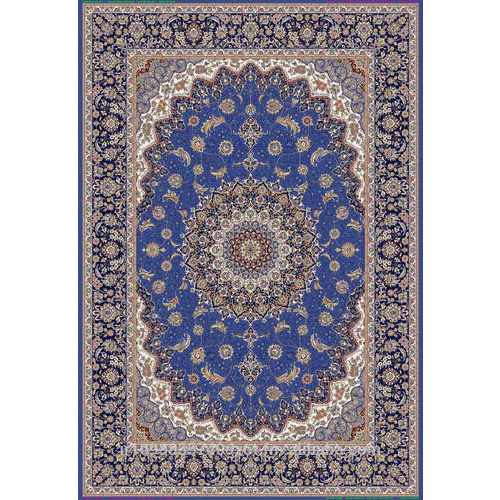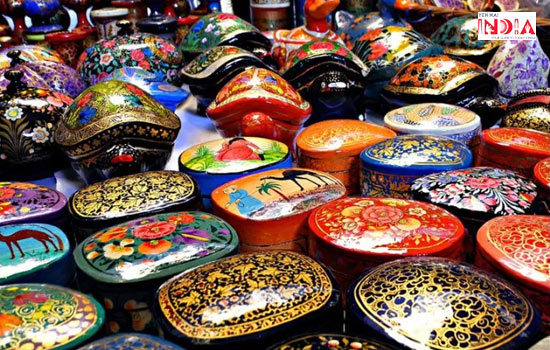.webp)
Amir Suhail Wani
A man in his late fifties, his back slightly hunched with the weight of years, leans forward in quiet concentration as he reads from a timeworn manuscript known locally as Kalbaaf Taleem – the Carpet Weaver’s Instructions. His hands move with practiced ease, meshing threads with delicate precision.
His rhythmic, almost meditative motion speaks of a lifetime of honing skill, but his brow is furrowed with worry. In the next few days, he will complete his masterpiece - a carpet destined to adorn the halls of palaces or the chambers of Presidents. Yet, even as he weaves, his mind is preoccupied with a deep anxiety – his wages, the looming uncertainty of his livelihood.
The weaver, oblivious to the vast cultural and civilizational value embedded in the fibers he intertwines, is unaware that each thread, each knot, carries the essence of an ancient heritage. His work is not just a craft but a repository of stories, traditions, and an enduring connection to the past.
He is, in his humble act, fusing centuries of history, culture, and civilization into one seamless flow. But despite this, the art he practices is in grave danger. The vibrant tapestry of traditional crafts is fraying, its once-prominent place in society shrinking into the margins. Handicrafts, whether it be the intricate patterns of Pashmina weaving, the delicate artistry of Papermachie, or the timeless elegance of wood carving, are all witnessing the same unfortunate fate.
The handicraft industry, once a cornerstone of our economy and culture, now can not keep pace with the fast-evolving global marketplace. The emergence of mass-produced, machine-made goods has flooded the market, while the shadow of middlemen and exploitative practices exacerbates the plight of artisans. The government, as well as concerned agencies, have turned a blind eye to the crisis. The result is not merely an economic setback but a cultural and civilizational calamity.
 Exquisite Kashmiri carpets
Exquisite Kashmiri carpets
The decay of these crafts is no less significant than the erosion of a language, the loss of political autonomy, or the fading of national identity. Culture, in its purest form, is the fabric of society – a blend of socio-economic mores, cultural continuities, and the legacy of indigenous goods. And as the threads of our artisanal heritage loosen and unravel, the very fabric of our culture is at risk of disintegrating.
Among the many reasons behind this decline, the most glaring is the overabundance of machine-made goods, which have drowned out their handcrafted counterparts. History offers us a parallel: the arrival of the printing press, which rendered thousands of calligraphers obsolete and caused the rapid decline of an ancient art form. Today, the proliferation of mass-produced items has placed handmade goods in a precarious position, cherished only by the elite who possess both the aesthetic sensibility and the economic means to afford them. But can an entire industry, with its myriad specialized crafts, survive on the whims of the wealthy?
In a society where economic hardship is widespread, the majority of people are more concerned with basic sustenance than with acquiring an intricate, handwoven carpet that costs as much as a year’s worth of living expenses.
In this tangled web of challenges, the government must take decisive action. It can no longer stand idly by while an entire industry withers away. There is a pressing need for state intervention, not only through financial support but also by assuming responsibility for exports and ensuring that these artisanal goods reach the markets where they are most needed. A concerted effort to infuse capital into the handicraft sector could breathe new life into it, helping these crafts keep pace with global standards and revitalizing the livelihoods of countless artisans.
 Papiermachie made in Kashmir
Papiermachie made in Kashmir
At the same time, efforts to combat the growing prevalence of counterfeit goods masquerading as authentic handicrafts are underway. Initiatives such as Geographical Indication (GI) tagging and product-specific brand stampings aim to protect the integrity of genuine artisanal products and help consumers differentiate between authentic craftsmanship and fraudulent imitations. Yet, this alone will not suffice. Artisans must also be educated about the importance of GI tags, the value of branding, and how to leverage these tools to carve out a niche in the market.
Equally important is the need for artisans to embrace modern marketing strategies and e-commerce platforms, which could enable them to expand their reach and compete on the global stage. While NGOs and government bodies are working to raise awareness and provide training in these areas, the challenge remains that many artisans remain unaware of the resources and opportunities available to them.
The government has launched various schemes at both the central and state levels to support the craft industry, but the lack of knowledge about these initiatives means many artisans miss out on vital opportunities.
Ultimately, these efforts must work in harmony, with the government, artisans, and the public all playing their part in reviving this ancient industry. If we succeed in breathing life back into the handicraft sector, we will not only create employment opportunities for future generations but also reconnect them with their cultural roots, ensuring that this rich heritage is passed down with dignity and prosperity.
ALSO READ: "Kashmir's turmoil helped women to excel while men lagged due to changing values"
The road ahead is fraught with challenges, but the hope of restoration is not out of reach. With concerted effort, collaboration, and a deep appreciation for the craftsmanship that binds us to our history, the tapestry of our cultural heritage can be rewoven, stronger, and more resilient than ever before.
